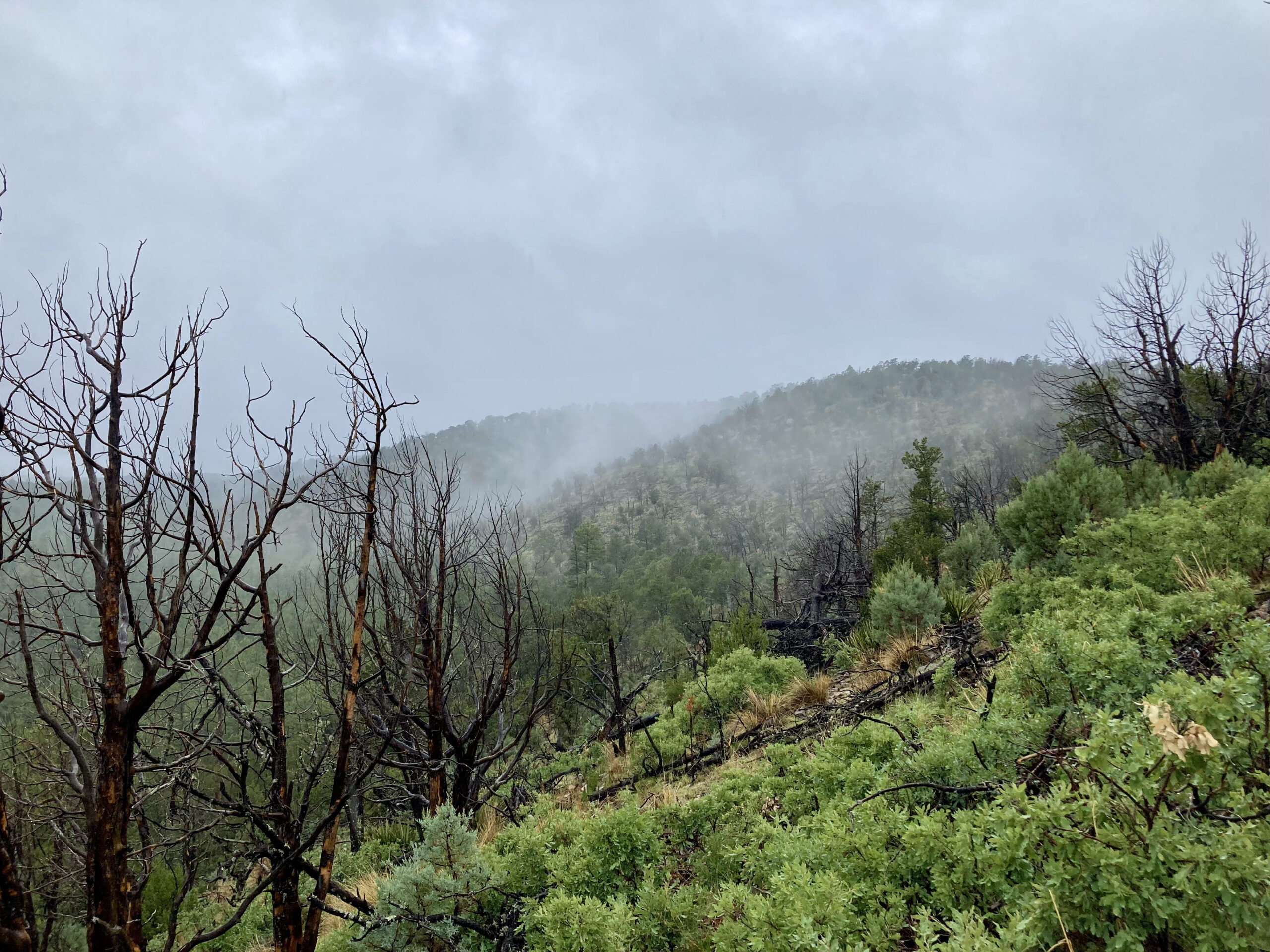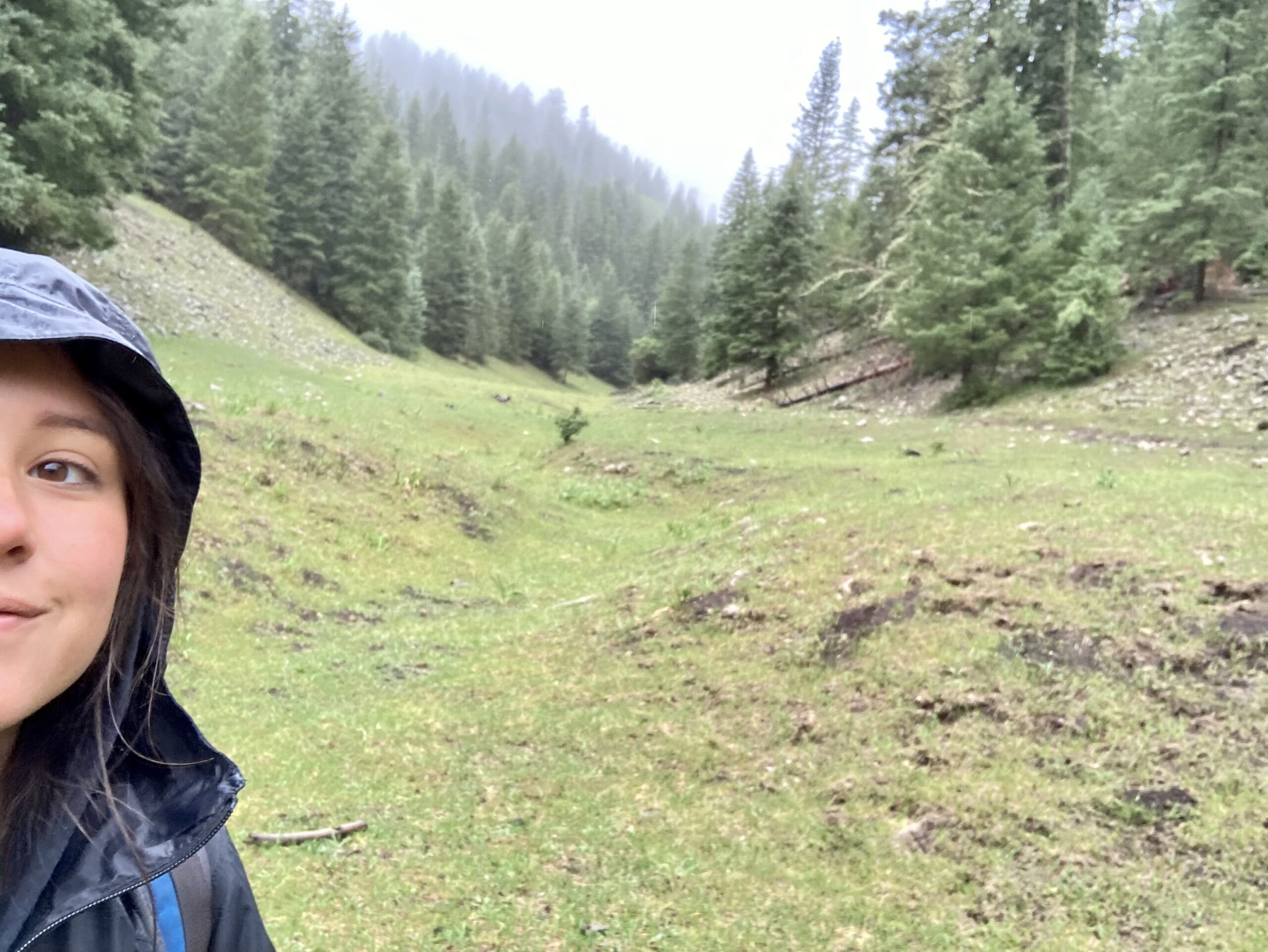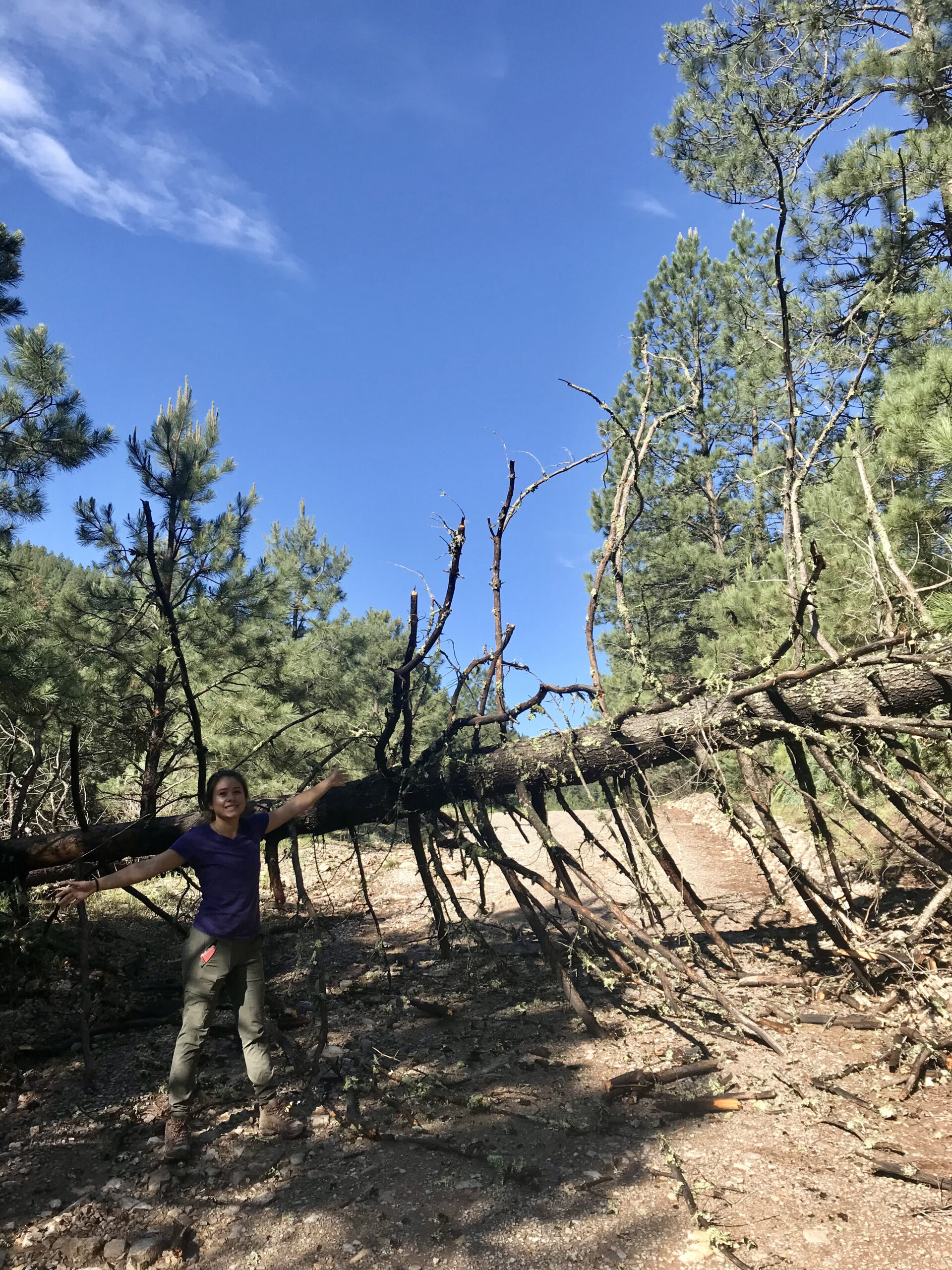The past few weeks here in the Lincoln National Forest have certainly flown by! Each week is a whirlwind of activity- we’ve been completing a good amount of surveying work, starting out with helping the Natural Resources crew with Mexican spotted owl and New Mexico meadow jumping mouse habitat monitoring. This process includes gathering data on the vegetative growth in protected plots, and has given me practice on identifying grass species in the field. In turn, they’ve been helping us botany folk with our rare plant species surveys! I was pretty excited to start those, since that indicated switching the majority of the time to being in the field.
Our survey days have been pretty adventurous so far! With the NR crew, we have about 5-7 people covering at least several miles of surveying and have been able to complete almost 7000 acres in just a few weeks! A large portion of that was pinyon-juniper habitat, and while we haven’t found any rare species in that particular area, it’s mostly previously unsurveyed ground so just gathering data there is helpful for future analysis and the South Sacramento Restoration Project in general. Our other major site was mixed conifer, which while botanically more interesting, still yielded no rare plants. But even negative data is still data!


A typical survey day consists of all of us hopping into our Ford Explorer (the Botmobile!) and driving up to a couple hours to our survey site- luckily, we’ve specially curated a playlist that includes plant-themed bops such as “Plantasia” by Mort Garson (1976), early 2000s hits by Fergie, Shakira, Rihanna, etc., and even the internet viral sensation “Actual Cannibal Shia LaBeouf”- an eclectic warm-up to our long days of hiking. Some of our sites have included some interesting 4WD challenges, but our Botmobile has consistently exceeded expectations and remains as reliable as ever. Upon arriving, we plan our routes using our GPS units and Avenza. I’ve already gotten much better at reading topographic maps, a skill that saves a ton of energy when you can predict how steep an elevation gain might be. Once we have our plan, we set off, hopefully scrambling over brush and fallen logs as successfully as we’re able and in whatever (safe) weather happens upon us. I’ve definitely taken my fair share of falls over a tree or on a muddy slope, but it certainly adds to the excitement of being out in the field! We typically each are able to bushwhack about 5 miles before we have to head back, and the entire time we’re keeping our eyes peeled for any rare species that may pop up. Hopefully by the end of the season we can claim to have found an unrecorded population!


Our next few weeks we’re starting some Goodding’s Onion monitoring, as well as continuing the botanical surveys for this restoration project. I’m definitely looking forward to spending more time out in the field and exploring even more of New Mexico in our off time!


